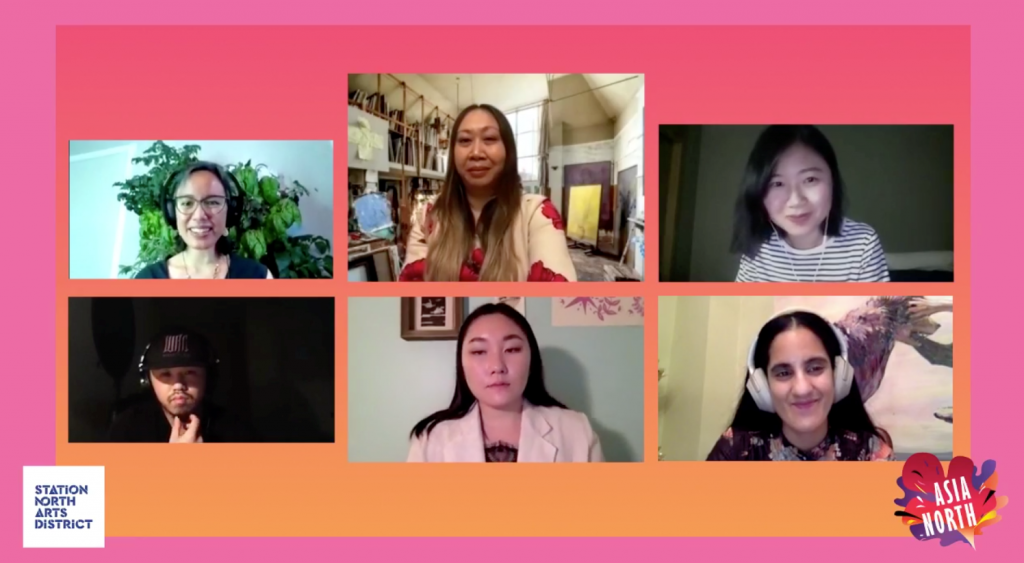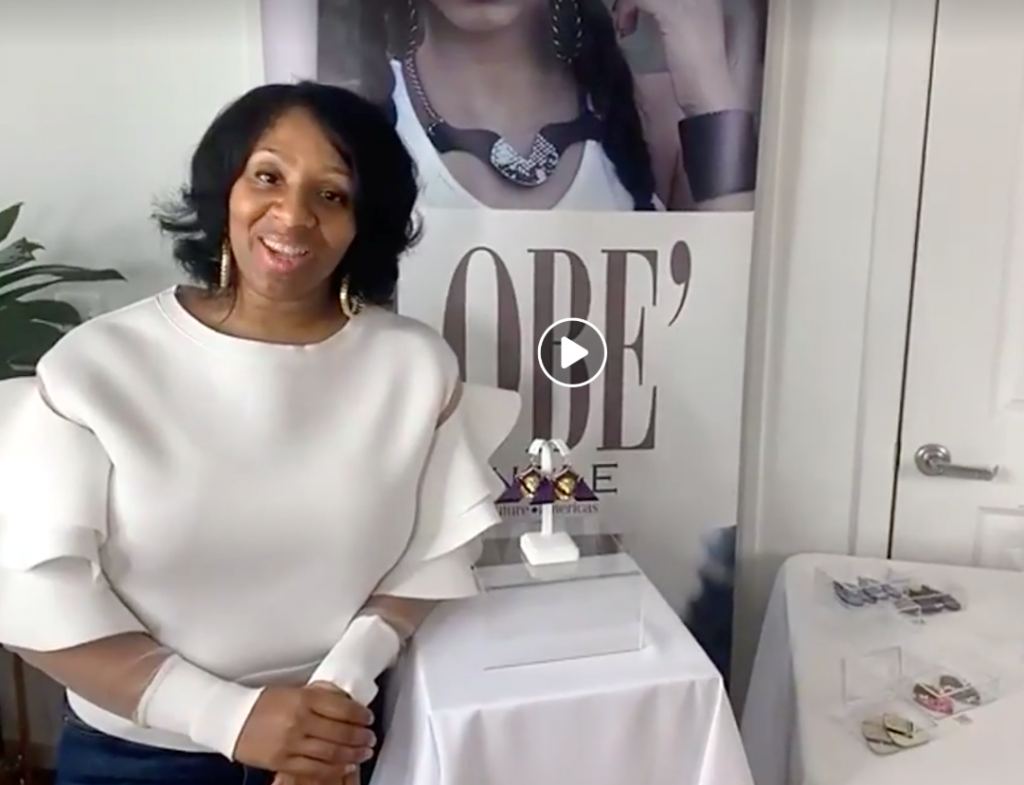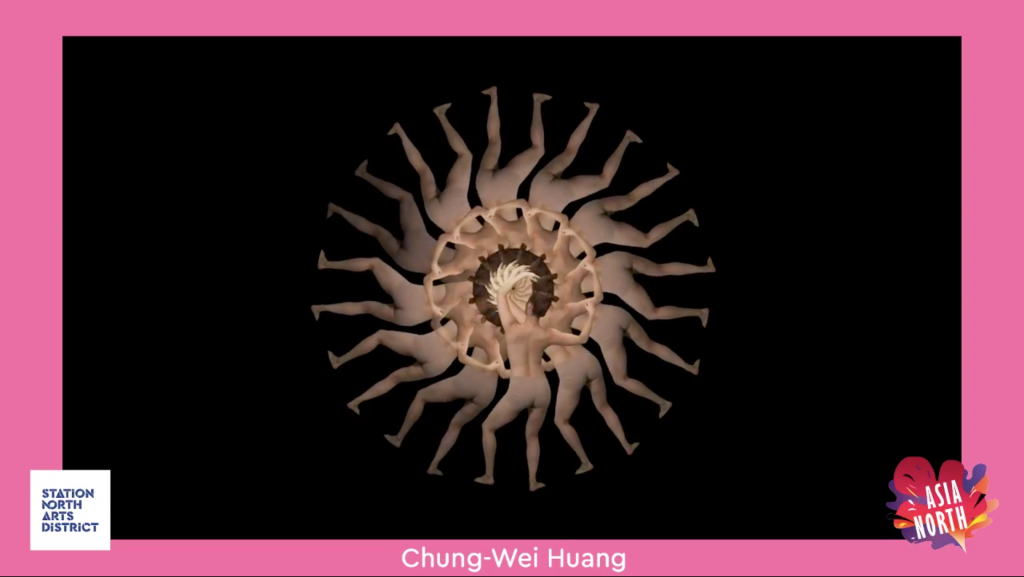
Over the past several months, Baltimore’s creative community has had to make significant adjustments to the ways in which we all interact with the arts. With stay-at-home orders, gathering restrictions and social distancing, many arts programs, classes and activities can no longer happen the way they once did. Thinking creatively, Baltimore individuals and organizations have looked to virtual opportunities to keep the arts thriving during this time.
BOPA is proud to feature Baltimore and Maryland arts organizations that have had to make these necessary adjustments.
Today’s spotlight is on Station North Arts District, the first area in Baltimore to receive the State designation as an Arts & Entertainment District in 2002. Station North Arts District has spent the past few months adapting their programming to virtual platforms, with curated digital “art walks” and a virtual art festival. Read more below to hear from their team and artists about the challenges and successes of transitioning to digital.
***
Station North Arts District

The Station North Arts District, a program of the Central Baltimore Partnership, kicked off 2020 with a sense of buzzing energy and anticipation towards a bounty of arts programming within the district, like the second Asia North Festival, Artscape, Ynot Lot programming, and a new series of art walks. This quickly turned into a sense of caution and crisis-management as artists and everyone around the country was suddenly mitigating the effects of COVID-19 pandemic.
Our community members were faced with unemployment, friends and family becoming ill with COVID-19, negotiating rent abatement, and securing any grant funds to help Station North’s creative enterprises remain strong during the pandemic. Those artists who were able to continue making work were doing so to maintain their mental health, income, organize each other, or redefine what “work” meant. Several Station North-based businesses, artists, and non-profits responded to the pandemic by shifting their creative practice to a PPE factory in response to a lack of federal resources needed to keep our communities safe. We heard many artists say they didn’t have the capacity to make work until they were stabilized, or needed to focus on the side of their practice that could sell products. Meanwhile, there was a deep desire to process what was happening in the world and stay connected amidst a stay-at-home order that left many people isolated.
Station North asked: How can we support artists right now with our existing resources? One of the answers we could follow through with was to pay local artists, and offer a platform to showcase their work to increase followers, support sales, and help maintain a sense of community to honor the amount of work that had already gone into cancelled programs. When we first pitched the idea of a digital art walk, the first question was typically “What do you mean by ‘walk’”? As other arts districts around the city, like the Highlandtown Arts District, began to experiment with what that word means in a digital context, several definitions arose. Ideas spanned from a network of mini-events dotted throughout the district happening simultaneously in a “choose your own adventure” style, to a structured, curated evening of sequential performances you may see at a concert, only online.
Station North’s definition is still evolving as we understand what works and what doesn’t, and how online programming can best serve the needs of Station North artists and creative businesses. We kicked off a digital event in late May with a series called “Station North Shines,” aimed at highlighting makers in the district who were looking to feature their online shops.
Designer Qwishuna Smith, jewelry artist Gina Tackett, curator Jordan Faye Block, and studio manager Elliot Keeley with the Baltimore Jewelry Center talked about their current work and how they were adjusting. Gina Tackett shared, “It was wonderful to meet more amazing artists and share our creativity together for Station North. The virtual format was very new for me and was an important challenge. I choose to focus on my direct message and communicate that intention clearly.”

The following month Station North Shines pivoted to focus on the Asia North Festival that was slated to happen in Station North in April. Co-curators Nerrisa Paglinauan and Joanna Pecore of the Asian Arts & Culture Center at Towson University quickly adapted the exhibition, Tradition-Memory-Transformation, which they planned to show at the Gong-Yu Yesul Gallery in Station North. Featuring twenty-five regional Asian and Asian American artists, they converted the show to an online exhibition. (We highly encourage you to check out the exhibit at https://www.towson.edu/asianorth). What the online version doesn’t offer is a compensated, interactive opportunity to hear directly from the artists, and infuse live performance. Hence, the second iteration of Station North Shines was developed in collaboration with Central Baltimore Partnership and the Asian Arts & Culture Center with technical support from Human Beings Productions. If you missed us live, you can view a recording of the event here!
The event aired on Station North’s Facebook Page via Facebook Live on June 5, with opening statements acknowledging the on-going demands across the country for justice for Black communities as we reflected on our role as artists and arts administrators in Baltimore. (Please see Station North’s full Black Lives Matter statement on our website).
That evening, the nervous energy of a live event returned for the first time in months, but with it a fresh reminder of how important it is to gather in conversation across cultures; Paul Kim discussed his grandfather’s role in nurturing Koreatown, multi-disciplinary artist Davine Ker opened the night with a comedy set that quickly turned into a family conversation on solidarity, painter Monica Youn discussed how she responds to gender norms using symbolic materials on canvas to process conflicting messages as a Korean-American woman, Taiwanese video artist Chung-Wei Huang screened excerpts from two films of beautifully choreographed “dance videos” focusing on outsider narratives and body politics, and musician Amrita “Ami” Kaur Dang invited people to join her through song or breathing in a guided meditation, asking us to pause and consider how music can be used in a spiritual sense to quell anxieties and offer hope.

Even with weeks of preparation, a tech rehearsal, and artists doing their best to adapt to an online forum, after the show Ami Dang offered a sentiment that reveals the limitations of interacting online, and suggests ways we can strive to better utilize this platform:
“These online facsimiles cannot embody the elements that make in-person performances exhilarating for both the performers and audience members, that is, the energy in the room, the sound and sights of live musicians performing, and the act of bringing a community together. As an electronic musician, I have also struggled in lockdown with getting the best audio signal and mix through the broadband connection. Since I use my computer as a source of the music instrumentation, I can’t use this device as the streaming device, and another computer is required. If I didn’t have access to so many devices, I wouldn’t be able to stream the music that I make.
In other ways, livestreaming can be beneficial. It provides a platform for people anywhere in the world to watch your performance or for those who might not be able to attend an in-person performance due to time constraints, caring for children, not living in the place where an artist is performing, etc. As we move forward, I’m curious to see what other artists will do to use the online medium as an inherent part of the artwork. I would love to have created an art installation inside the room that I performed in, for example, or used the sounds of people’s voices within the event as the sound sources for live sampling. I’m interested in ways that artists will play with the idea of artmaking in the virtual space.”
For an artist like Davine Ker, who is used to reading the response from a crowd while doing stand up, she had her own unique challenges in performing while staring at a computer screen, with invisible, muted participants. This is where the chat feature becomes so important! We also lamented the opportunity to see Youn’s delicate, three-dimensional paintings using eggshells in-person, and Huang’s work, while breath-taking as a stand-alone piece, is designed to be viewed as an installation. Translating that full experience to the virtual space will take more innovation, funding, and thoughtfulness with regards to Dang’s comment about the digital space being a medium by itself. It leads us to ask ourselves, what can this new medium show us that we didn’t see before?
Even with these existing challenges, Nerrisa Paglinaun, the co-curator, confirmed:
“Having this online platform is a lifeline for artists and audiences alike to continue to share, experience, and celebrate visual and performing arts together, since we don’t know when we’ll be able to gather safely together in person. Putting the exhibition online made it accessible to people outside of the Baltimore area who might not have been able to travel to see the show in person, thus engaging a much larger and diverse audience. Plus, the show will remain online indefinitely.
Joining the online event live also enabled direct communication between the audience and the artists via chat. While I am grateful we have this platform, and will continue to use this platform to some extent if/when things get back to normal, I can’t wait for all of us to be able to experience the arts together in person.”
Until it is safe for everyone to be together again, we will continue to adapt to online programming, while paying attention to ways it can better serve different needs. Thank you to the artists who jumped into an experimental effort, and to the funders (listed below) who helped make these initial events happen. Please join us for the next Station North Shines on Friday, July 17th, featuring four more Asia North artists! Go here to RSVP.
HOW TO GET INVOLVED: Station North is launching a district resource page to help highlight Black businesses, organizations, ventures, entrepreneurs in the district. We will further be developing an artist directory as well in the coming weeks. If you would like to participate in a future art walk, or be in our directory, please fill out this form and reach out to us at coordinator@stationnorth.org to get in touch! You can follow Station North on Facebook and Instagram @stationnorth, and see a recording of each Station North Shines on our Facebook page.
——–
Special thank you for support from William G. Baker, Jr. Memorial Fund, Central Baltimore Partnership, Maryland State Arts Council, Citizens of Baltimore County, AA&CC Members, TU-BTU Presidential Priority, PNC Bank, TD Bank, WYPR, Johns Hopkins University, Lord Baltimore Hotel, Baltimore Kawasaki Sister Cities Committee, Baltimore Changwon Sister Cities Committee, Mike Shecter, Lane Harlan, Leandro Lagera, and Matt Steinberg.
Special thank you for research support from: Ock Kyung Lee, Michelle Lee, Paul Kim, and Dale Dusman
